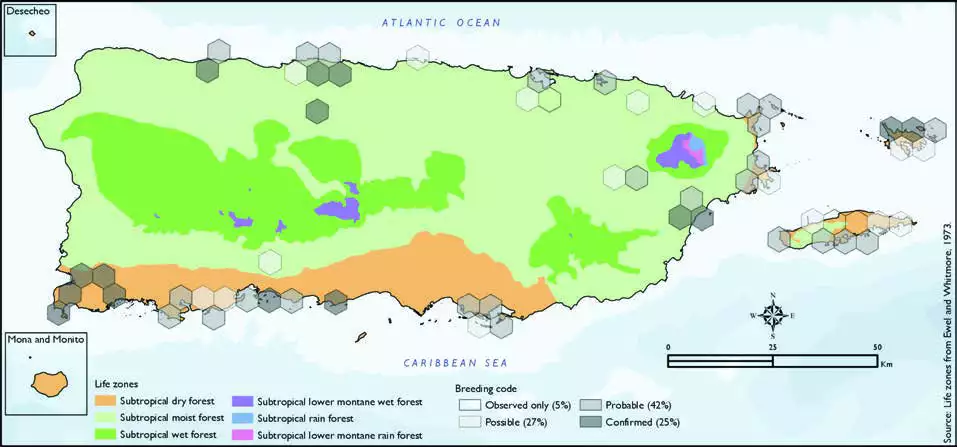White-cheeked Pintail
Description
The white-cheeked pintail (Anas bahamensis), also known as the Bahama pintail or summer duck, is a species of dabbling duck. It was first described by Carl Linnaeus in his landmark 1758 10th edition of Systema Naturae under its current scientific name.
Like many southern ducks, the sexes are similar. It is mainly brown with white cheeks and a red-based grey bill (young birds lack the pink). It cannot be confused with any other duck in its range.
Distribution & Habitat
The White-cheeked Pintail occurs generally through The Bahamas,
Greater Antilles, Virgin Islands,
northern Lesser Antilles, and
much of South America (Raffaele
and others 1998). The Puerto
Rico population is estimated
at 3,755 individuals, although
seasonal variation in abundance
and distribution is variable due to wetland hydrochemical
conditions, which affect food
resources (Rivera-Milán and
Bonilla-Martínez 2007). Pintails
have been documented traveling
back and forth between Culebra
and the Humacao marshes in the
east coast (Collazo and Bonilla-
Martínez 2001) but can also be
found in mangroves and lagoons
throughout the island (Biaggi 1997, Raffaele 1989a). It is a fairly
common resident in Vieques
(Gemmill 2015). Habitat includes
mostly fresh to hypersaline water
bodies (Raffaele and others
1998) including ponds, lagoons,
and mangrove swamps (Oberle
2018). The atlas fieldwork
yielded a total of 123 records
within 59 hexagons or 12
percent of the 479 total hexagons
(see map). Of the 59 hexagons
where this species was found,
breeding met the atlas definition
of confirmed in 25 percent (15)
of the hexagons, probable in 42
percent (25), and possible in 27
percent (16), while the species
was observed in 5 percent (3)
of the hexagons but without
evidence of breeding (see map). White-cheeked Pintail distribution. The map shows the highest breeding code by hexagon and overlaying the ecological life zones
in Puerto Rico. Note: percentages may not total 100 due to rounding. 31White-cheeked Pintail/Pato Quijada Colorada

Breeding Habits
The White-cheeked Pintail scrape nest is made on dry
land covered by a clump of
vegetation, sometimes far from
water (Raffaele and others 1998).
Previously published reports
indicate that this species breeds
primarily from February to June,
but the season varies depending
upon rainfall (Raffaele and others
1998). Atlas results show that
this species breeds throughout
the year with the most breeding
activity from May to July (see
chart). The breeding activity
peaks in June, and it mostly
takes place within the subtropical
dry forest life zone (see chart).
Results show that this species breeds mostly in lowlands
within the subtropical dry forest
life zone (59 percent of the
hexagons) and less frequently
within the subtropical moist
forest life zone (41 percent of the
hexagons) (see table and map).
Conservation
The current global population trend of the White-cheeked
Pintail is described as
decreasing. However, some
populations may be stable,
and others have unknown
trends (Wetlands International
2012). This species is currently
listed as a species of least
concern by the IUCN (BirdLife
International 2016). In Puerto Rico, Rivera- Milán and Bonilla-Martínez (2007) note
that the pintail is threatened
by anthropogenic disturbances
including habitat loss and
deterioration and illegal hunting,
and therefore recommend that
more information be obtained
on demography and movements
and that hunting continue to be
prohibited. In Puerto Rico, the
White-cheeked Pintail is locally
listed as vulnerable (PRDNER
2016) and has a protected habitat
in land of 16 percent or 214
km2 of the total area covered by the hexagons where evidence
of breeding was found for this
species (1338 km2).
Related Species
Family:
duck